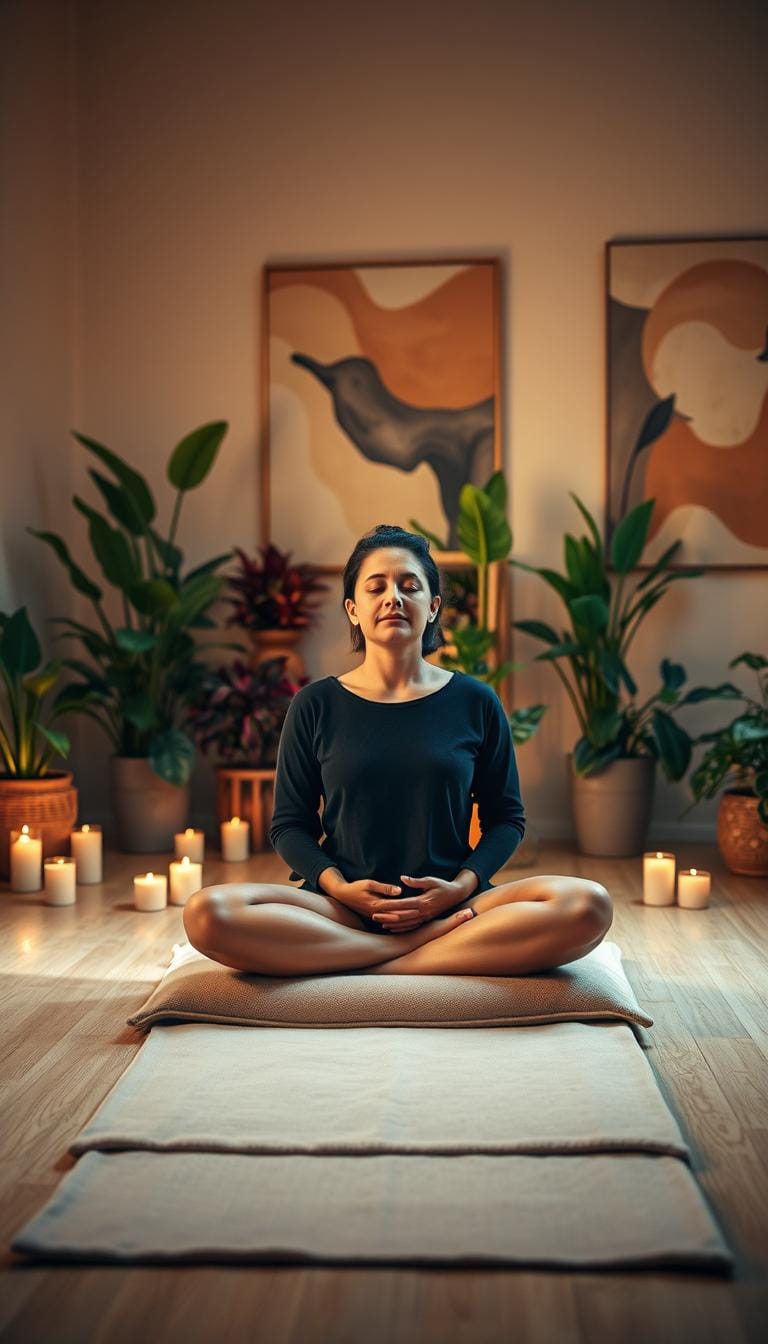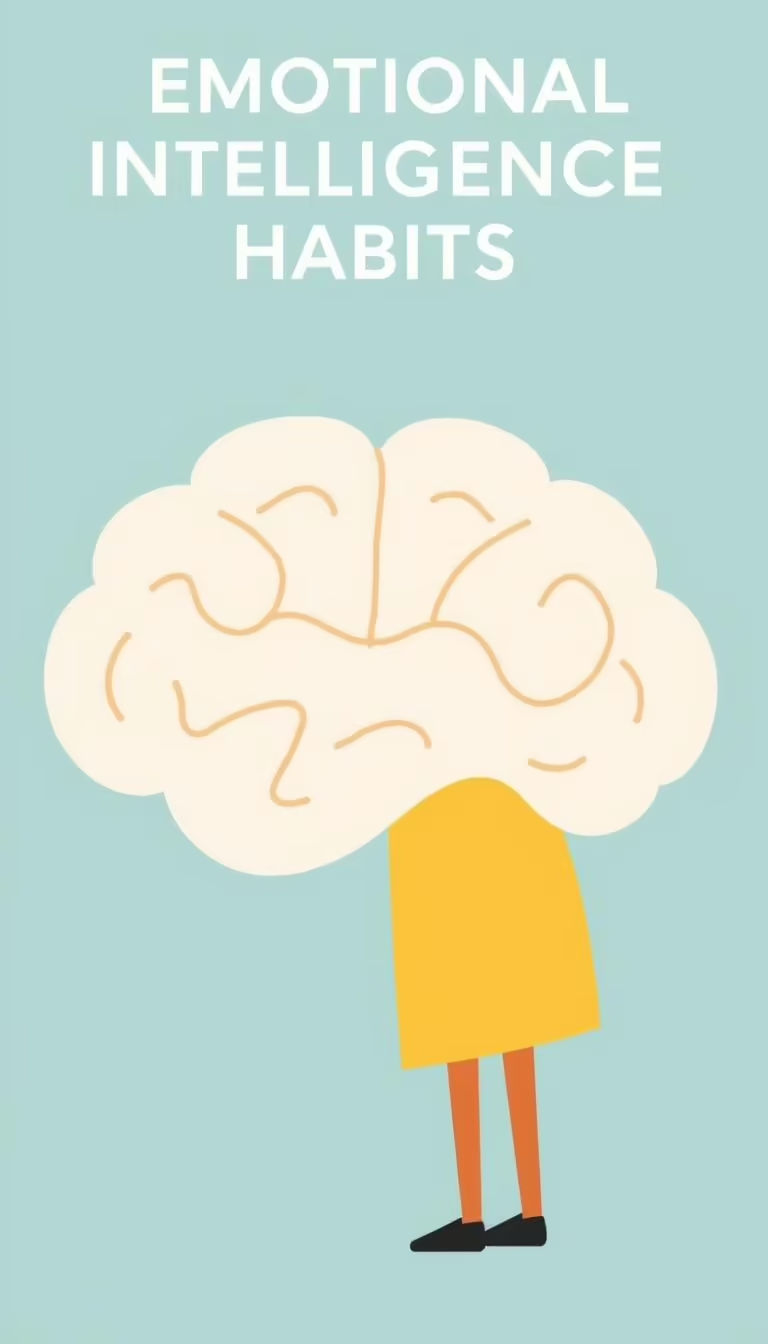Meditation Techniques: Top 10 Practices for Inner Peace
Table of Contents

Imagine a tool that calms your mind, reduces stress, and brings clarity every day. That’s what meditation techniques have done for me. Through mindful breathing and body scans, I’ve turned chaos into calm. This article shares ten practices that changed my life, showing inner peace is within reach through simple daily steps.
Millions in the U.S. use meditation to balance their fast-paced lives. Whether you’re a busy parent, student, or professional, these practices fit your schedule. Each of the ten techniques in this guide is backed by science, helping you build resilience and focus without taking up too much time.
Key Takeaways
- Meditation techniques offer proven tools to reduce stress and boost mental clarity.
- These practices are flexible enough to fit into any lifestyle, even with busy schedules.
- Research shows meditation can physically change brain patterns to improve emotional health.
- My journey proves that consistency, not perfection, leads to lasting benefits.
- Inner peace isn’t a luxury—it’s a skill anyone can learn through these ten methods.
Understanding the Power of Meditation Techniques in Modern Life
In today’s world, meditation is a calm in the storm. We’re all juggling deadlines, screens, and noise. Many of us seek balance. Science backs up ancient wisdom: meditation changes how we think and feel.
How Meditation Affects the Brain and Body
Studies show meditation strengthens brain areas for focus and control. It calms the fear center, reducing anxiety. One Harvard study found daily meditation thickens brain layers for memory and decision-making. It also lowers blood pressure and boosts the immune system.
The Science Behind Meditation’s Stress-Reducing Effects
Meditation lowers stress hormones like cortisol. It activates the rest mode in our bodies. A Health Psychology study found even short sessions reduce heart rate and tension. It’s a real reset for our bodies.
Why I Started My Meditation Journey
Two years ago, I was exhausted, missing deadlines, and stuck in a rut. I was skeptical but started with guided apps. I noticed changes in weeks. I slept better, made clearer decisions, and felt less emotional.
Mindfulness Meditation: The Foundation of Present-Moment Awareness
When I first tried mindfulness meditation, I thought it would quiet my mind. But it did something better—it taught me to listen. This practice isn’t about emptying your head; it’s about observing your thoughts without judgment.
Over time, I learned to notice stress triggers and respond calmly. Instead of reacting impulsively, I learned to respond thoughtfully.
“Mindfulness is about paying attention in a particular way: on purpose, in the present moment, and non-judgmentally.”
Here’s how to start: mindfulness meditation is simple but powerful. Follow these steps:
- Find a quiet space, sit comfortably with your back straight.
- Close your eyes or soften your gaze downward.
- Breathe naturally and focus on the sensation of air entering and leaving your nostrils.
- When thoughts arise (they will!), acknowledge them like passing clouds, then return to your breath.
I started with 5 minutes daily. My mind wandered constantly—but that’s normal. The goal isn’t to stop thinking. It’s to notice when you’re distracted and gently redirect focus.
Over weeks, I noticed I’d pause before reacting to stress. Like traffic jams or emails piling up.
Science backs this: a 2021 study in Nature Human Behaviour linked regular mindfulness meditation to reduced amygdala activity. The brain’s fear center. My own experience mirrored this—less knee-jerk panic, more clarity.
Breath Awareness Meditation for Beginners
Starting with breath awareness is all about curiosity, not being perfect. I sit comfortably, with my hands resting, and focus on my breath’s natural flow. Here’s how I help beginners:
My Step-by-Step Breathing Technique Guide
- Find a quiet spot. Close your eyes or soften your gaze.
- Breathe in deeply through your nose for four counts. Hold for seven seconds. Then, breathe out slowly for eight counts (4-7-8 technique).
- If your mind wanders, gently bring your focus back to the sensation of air moving through your nostrils.
- Try box breathing: breathe in for four seconds, hold for four seconds, breathe out for four seconds, and pause for four seconds before starting again.
Common Challenges and How to Overcome Them
- Mind wandering: Recognize distractions without judgment. Imagine thoughts as clouds passing by.
- Breathing anxiety: Begin with 2-3 minute sessions. Use apps like Calm or Headspace for guided help.
- Physical discomfort: Try different positions—lying on your back if sitting is uncomfortable.
Tracking Your Progress with Breath Awareness
Progress isn’t just about longer sessions. Notice how you naturally slow your breathing during stressful moments. Keep a journal to track when you:
- Consciously slow your breathing during stress
- Feel less reactive to daily frustrations
- Recognize your breath without needing to count
My breakthrough was when I linked breath awareness to everyday activities. Brushing teeth, walking the dog, or waiting in line became moments of mindfulness. These small moments add up to lasting mindfulness.
Loving-Kindness Meditation to Cultivate Compassion
When I first tried loving-kindness meditation, it felt forced. How could repeating phrases like “may I be safe” soften my inner critic? Yet over time, this practice rewired my mindset. Today, it’s my go-to tool for nurturing self-compassion and mending strained relationships.
Start by sitting quietly and directing goodwill inward. The traditional sequence guides you to send wishes to yourself, a benefactor, a neutral person, someone challenging, and all beings. Here’s how I structure my sessions:
- Begin with self-compassion: “May I be free from suffering.”
- Redirect kindness to someone who’s supported you.
- Include a neutral person—maybe a stranger seen daily.
- Face difficult relationships: “May they find peace.”
- Expand to all beings universally.

A key moment was when I used these phrases in a workplace conflict. Saying “may we both find understanding” changed my anger to curiosity. Over weeks, it eased tensions. Now, I often say “may I meet this day with courage” and “may we all release judgment.”
Don’t dismiss it if it feels awkward at first. Like any muscle, compassion grows with practice. As meditation teacher Sharon Salzberg says, “Metta [loving-kindness] isn’t about feeling love instantly—it’s about choosing to act kindly even when emotions lag.”
Try writing your own phrases. Start small. This practice isn’t about erasing pain—it’s a quiet revolution, turning goodwill into a daily habit. When I focus on self-compassion, my patience with others naturally deepens. It’s proof that loving-kindness meditation can transform both inner and outer worlds.
Body Scan Meditation for Physical Tension Release
Stress can make muscles tight. A body scan meditation helps release this tension. It teaches you to listen to your body’s signals.
How to Perform a Complete Body Scan
Begin by lying down or sitting comfortably. Close your eyes and take deep breaths. Follow these steps:
- Start with your toes. Notice any tightness or warmth. Imagine breathing into these areas.
- Move your focus up your body: feet, calves, knees, and so on until you reach your head.
- Pause at each spot. Let any tension ease without forcing it.
- Finish by scanning your body again to see how it’s changed.
Incorporating Body Scanning into Your Daily Routine
Even short sessions of 3 minutes can help. Here are simple ways to add it to your day:
- At work: Close your eyes and scan your shoulders and neck during breaks.
- Before bed: Lie down and release tension in your legs and back.
- In lines: Mentally check your jaw and hands while waiting.
My Experience with Body Scan Healing
After six months of regular practice, my chronic shoulder stiffness from work improved a lot. I realized holding my phone caused tension I used to ignore. Now, I use body scans to relax before bed, and my sleep is better. This practice has turned physical discomfort into a way to care for myself.
Transcendental Meditation: Unlocking Deeper States of Consciousness
While mindfulness keeps us in the present, transcendental meditation (TM) takes us beyond thought. This ancient practice, revived in the 1950s, uses personalized mantras to reach deeper mental states. Unlike guided sessions, TM uses silent repetition to quiet the mind—a journey I took after trying other methods.
The Origin and Philosophy of TM
TM comes from Vedic traditions, focusing on natural mental settling without effort. Certified instructors give each person a mantra based on their background and personality. Studies show TM reduces stress hormones more than general relaxation*.
Finding Your Personal Mantra
My teacher called mantras “mental bridges”—simple sounds with no meaning. Here’s how it works:
- Select a mantra during an initial consultation
- Repeat it silently for 15-20 minutes twice daily
- Observe the mind moving beyond thoughts
My mantra, chosen for its sound, became a familiar anchor during sessions.
My Journey with Transcendental Practice
Starting TM felt daunting. Early attempts were filled with self-doubt—am I doing it right? After weeks, I noticed sharper focus and calmer emotions. Even with setbacks, the practice became a non-negotiable part of my routine.
“Consistency matters more than perfection,” my instructor advised. This mantra stuck with me more than the meditation itself.
Today, I mix TM with walking and breathwork, creating a balanced approach. It’s not a replacement—just another tool in the mindfulness toolkit.
Guided Meditation: When and How to Use External Support
When I first started meditating, guided meditation was my gateway to consistency. Recorded voices guided me through breathwork or visualization, turning uncertainty into ease. Now, I use them like a mental roadmap during chaotic weeks.
- Try guided sessions when learning new techniques (e.g., body scans or compassion practices)
- Use them during high-stress periods to stay focused
- Choose guided tracks for specific goals: sleep, anxiety relief, or emotional healing
My favorites include Headspace’s focus sessions and Insight Timer’s free library. YouTube channels like The Honest Guys offer 20-minute bedtime meditations that helped me sleep better. Apps like Calm even track progress, showing how guided practice builds habits over time.
“Guided sessions aren’t shortcuts—they’re training wheels that help you master the skill.”
When should you go solo? Once you’re comfortable with basics, silent practice deepens self-awareness. But never feel guilty using guides—they’re tools, not crutches. Whether you’re a beginner or a seasoned practitioner, pairing guided tracks with your routine can unlock new layers of focus and calm.
Walking Meditation: Mindfulness in Motion
Walking meditation turns every step into a meditation. I found this out years ago when I was trying to stay present during daily tasks. Now, these meditation techniques help me stay focused, whether I’m in a rush or enjoying a leisurely walk.

Techniques for Mindful Walking
Here’s how I practice walking meditation:
- Start by standing and feeling your feet on the ground.
- Walk slowly, noticing the three steps: lifting, moving, placing each foot.
- If your mind wanders, gently bring your focus back to the walking sensations.
Integrating Walking Meditation
I’ve made routine tasks mindful by using these tips:
- Walking to the car? Count your steps instead of checking your phone.
- Grocery shopping? Pay attention to the weight of your bags and your breathing.
- Even taking out the trash becomes a chance to feel connected to the earth with each step.
Urban vs Nature Settings
| Setting | Focus | Example Tips |
|---|---|---|
| Urban | Managing distractions | Use traffic lights as pause points to reset focus |
| Nature | Engaging the senses | Notice leaf textures, bird sounds, and sunlight patterns |
“Walk as if you are in love with the Earth.” — Thich Nhat Hanh
Visualization Meditation for Manifesting Your Goals
Visualization meditation blends mindfulness with setting clear goals. It helps prepare for big moments like job interviews or races. It’s not magic; it’s a mental prep that gets your brain ready for success.
- Find a quiet spot and take three deep breaths.
- Close your eyes and picture your goal in detail.
- Use all your senses: What sounds, textures, and feelings do you experience?
- Finish by promising to take steps toward your goal.
| Aspect | Simple Technique | Advanced Technique |
|---|---|---|
| Duration | 5–10 minutes daily | 15–20+ minutes with layered sensory details |
| Focus | Single goal visualization | Multi-scenario planning |
| Outcome | Basic goal clarity | Neurological habit formation |
My top tip? Mix visualization with mindfulness meditation. Before a big talk, I mentally walk through the room. I hear laughter and feel my hands steady. This lowers my nerves and builds confidence.
Science backs visualization, showing it activates brain areas like real actions. It’s not just about wishing for things to happen. It’s about mentally preparing for success. Try using all your senses to visualize your next challenge and see how it improves your focus.
Conclusion: Creating Your Personal Meditation Practice for Lasting Inner Peace
My meditation journey showed me that finding the right techniques takes time. Life’s demands change, and so does what works best. I started with short sessions, like five minutes a day, to build a habit.
Even now, I mix methods like breath awareness and body scans. These practices help me handle stress and stay present. They’ve become essential tools for me.
At first, I thought I had to meditate for an hour every day. But it’s consistency that counts, not how long. If I miss a day, I start again without feeling guilty.
Now, I use guided apps or quiet mornings to fit meditation into my day. This flexibility keeps me on track.
Combining different techniques creates a balanced routine for me. I start with breath focus, then move to body scans, and end with loving-kindness mantras. The important thing is to experiment and find what works for you.
Remember, meditation isn’t about being perfect. It’s about showing up, even when it’s hard. The techniques we’ve discussed are a starting point, but your journey is unique. With patience and persistence, these practices can lead to lasting inner peace. Explore, adapt, and trust the process.
FAQ
What are some basic meditation techniques I can start with?
There are many easy meditation techniques to try. Mindfulness meditation is a good place to start, focusing on the now. Breath awareness helps by keeping your thoughts on your breathing.
Guided meditations offer a structure for beginners. Loving-kindness meditation builds compassion. Try different ones to find what works best for you!
How can mindfulness meditation improve my daily life?
Mindfulness meditation makes you aware of the present moment. It can lower stress and boost your well-being. It helps you see your thoughts and feelings without judgment.
Just a few minutes of mindfulness can change how you handle stress. It’s really powerful!
What is guided meditation, and how can it help me?
Guided meditation follows a voice or audio that guides you. It’s great for beginners who find silent meditation hard. There are many apps and YouTube channels for guided sessions.
They offer sessions for sleep, relaxation, or emotional processing. It’s very helpful!
Can you explain the body scan meditation?
Body scan meditation involves checking in with your body, from head to toe. It relaxes and increases body awareness. It’s great for stress and improving sleep.
It’s perfect for anyone feeling stressed, physically or mentally!
What is Transcendental Meditation, and how does it differ from other techniques?
Transcendental Meditation (TM) is a mantra-based meditation that needs a certified teacher. It’s different from mindfulness because it aims to transcend thought for deep calm. It’s a unique addition to other meditation practices.
How does loving-kindness meditation help with self-compassion?
Loving-kindness meditation teaches you to be kind to yourself and others. It was hard for me at first, but it made me kinder to myself. It’s great for emotional well-being.
How can I incorporate meditation into my busy life?
Meditation can be hard to fit into a busy schedule, but short sessions help. Try breath awareness or relaxation techniques for a few minutes during breaks. Mindful walking is also a good way to practice mindfulness.
Is visualization meditation effective for achieving my goals?
Yes! Visualization meditation creates mental images of your goals. It clarifies your intentions and reduces anxiety. I’ve used it before big events and it boosts confidence.
It’s a powerful way to combine mindfulness with purpose.






